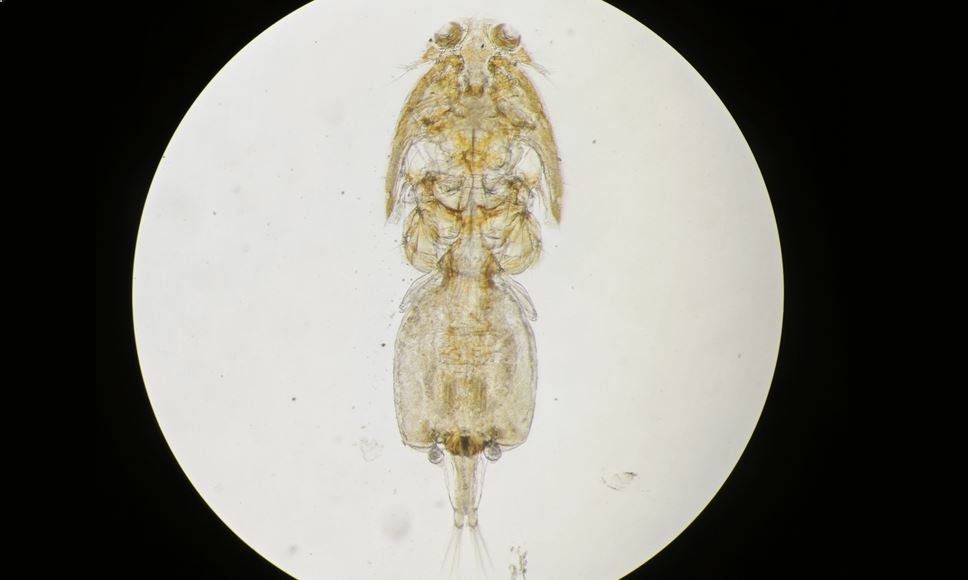In the case of female individuals, the cephalothorax is characterized by a length greater than its width and it exhibits low-protruding frontal plates. The postero-median lobe stands out conspicuously and is broader than the lateral lobes, featuring a truncated distal border. The fourth segment is notably large, and the genital segment widens toward the rear, with a very short anterior neck. The caudal rami are substantial and tapering, and their stout flattened setae are armed with spinnules rather than fine hair. The abdomen consists of two segments, with the second segment being long and slender. The antennule’s distal segment is elongated, and the antenna’s basal segment lacks any prominent process. The post-antennal process is a simple plate, and the post-oral process has a flattened apex. The maxilliped is characterized by a robust basal segment and a highly curved distal segment. The distal segment of the first leg is adorned with proximal spiny and well-developed setae, and the spine-like setae are lengthy, stout, and hairless. The first claw is long and features a barbed ventral wing, whereas the second and third claws are highly flattened and serrated on the ventral side. The exopod of the second leg has a ventral flange on the first claw, with the second claw being smaller and the third claw absent. The exopod of the third leg contains a short, flattened basal claw. The fourth leg is composed of three segments, with the last claw longer than the penultimate.
In males, the fourth thoracic segment is lengthy, and the two-segmented abdomen is exceptionally long, with an elliptical genital segment. On the second segment of the antenna, three adhesion pads are present. The short third segment is flattened, while the distal part is corrugated. The post-antennal process is reduced to a simple plate, and the post-oral process contains a small accessory structure. The caudal rami are rectangular and adorned with bushy setae. The maxilliped in males is more massive compared to females. The overall coloration of this organism is creamy white and semitransparent.
